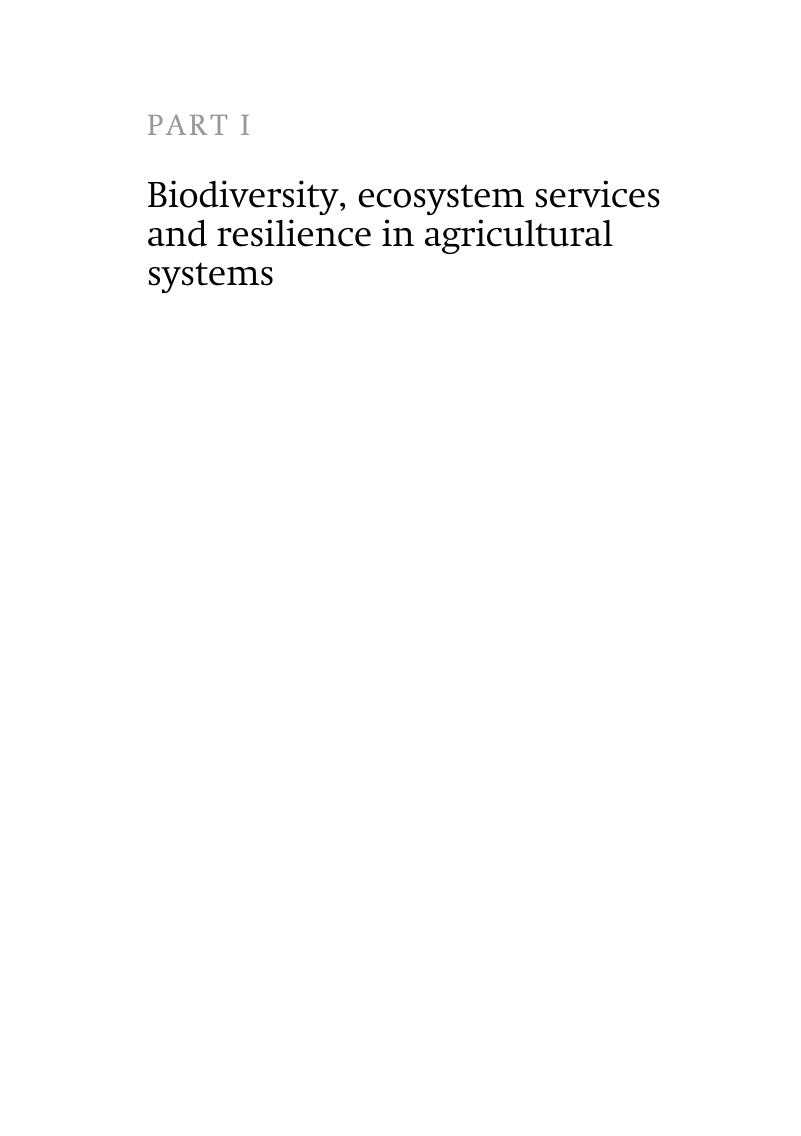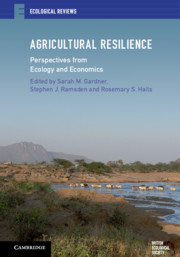Book contents
- Agricultural Resilience
- Ecological Reviews
- Agricultural Resilience
- Copyright page
- Contents
- Contributors
- Preface and acknowledgements
- Chapter One Introducing resilience
- Part I Biodiversity, ecosystem services and resilience in agricultural systems
- Part II Integrating biodiversity and building resilience into agricultural systems
- Index
- Plate Section (PDF Only)
- References
Part I - Biodiversity, ecosystem services and resilience in agricultural systems
Published online by Cambridge University Press: 12 April 2019
- Agricultural Resilience
- Ecological Reviews
- Agricultural Resilience
- Copyright page
- Contents
- Contributors
- Preface and acknowledgements
- Chapter One Introducing resilience
- Part I Biodiversity, ecosystem services and resilience in agricultural systems
- Part II Integrating biodiversity and building resilience into agricultural systems
- Index
- Plate Section (PDF Only)
- References
Summary

- Type
- Chapter
- Information
- Agricultural ResiliencePerspectives from Ecology and Economics, pp. 11 - 208Publisher: Cambridge University PressPrint publication year: 2019



